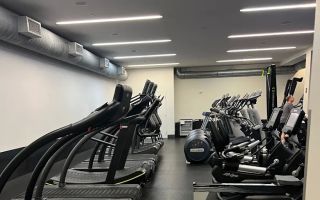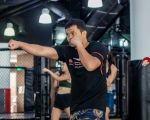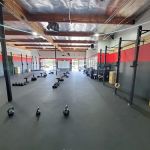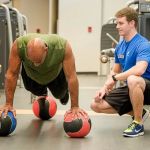Mastering Muay Thai Kicks Technique: Tips, Drills, and Techniques for Success
- 1. The Importance of Muay Thai Kicks in Combat
- 2. Different Types of Muay Thai Kicks and When to Use Them
- 3. Key Elements of a Good Muay Thai Kick
- 4. Muay Thai Kicking Drills to Improve Your Technique
- 5. Common Mistakes in Muay Thai Kicks and How to Avoid Them
- 6. How to Strengthen Your Kick for Better Impact
1. The Importance of Muay Thai Kicks in Combat
In Muay Thai, the kicks are one of the most powerful and versatile tools a fighter has. Muay Thai kicks are known for their devastating impact, speed, and accuracy. Whether you're using them for offense or defense, mastering the Muay Thai kicks technique can significantly improve your overall fighting ability. The kicks are used to target different parts of the opponent’s body, including the legs, body, and head. In fact, the leg kick is one of the most commonly used techniques in Muay Thai due to its ability to disrupt an opponent’s balance and posture.
Whether you’re competing professionally or training for fitness, Muay Thai kicks are vital to your success. They provide not only power but also the ability to control the pace of the fight, maintain distance, and create openings for other strikes. By improving your Muay Thai kicking technique, you can gain a significant advantage in any fight.
2. Different Types of Muay Thai Kicks and When to Use Them
There are several types of Muay Thai kicks, each with its own unique purpose. Understanding the different kicks and when to use them is essential for mastering the technique. Here are the primary Muay Thai kicks:
- Roundhouse Kick (Teep): The roundhouse kick is a versatile and powerful kick used to target the opponent’s head, body, and legs. It’s an offensive kick that allows you to strike at different angles. The roundhouse kick is often used to maintain distance or land a decisive blow. It’s one of the most common kicks seen in Muay Thai.
- Front Kick (Teep): The front kick, or teep, is an excellent defensive tool that pushes your opponent away. It’s typically used to disrupt an opponent’s advance or to control the range. It’s particularly effective for setting up other strikes or creating space in a clinch.
- Low Kick: The low kick is a key weapon in Muay Thai, often used to attack the opponent’s legs. A well-placed low kick can break down your opponent’s mobility, causing pain and making it difficult for them to fight effectively. This kick is commonly aimed at the opponent's thigh or calf.
- High Kick: The high kick is a powerful weapon in Muay Thai, used to target the opponent’s head. It requires flexibility and timing but can be devastating if landed correctly. The high kick is often used as a surprise attack, taking advantage of an opponent's open guard.
By incorporating each of these kicks into your training regimen, you can enhance your overall Muay Thai game and become a more well-rounded fighter.
3. Key Elements of a Good Muay Thai Kick
A powerful and effective Muay Thai kick relies on several key elements. To perfect your Muay Thai kicks technique, it’s essential to focus on the following aspects:
- Foot Position: The position of your foot plays a vital role in generating power for your kick. A proper pivot on the lead foot ensures that you can turn your hips fully, increasing the speed and force of the strike. It also helps to maintain balance during the kick.
- Hip Rotation: The power of the Muay Thai kick comes from the rotation of your hips. A strong rotation adds force to your kick and ensures that it lands with maximum impact. To improve this, practice hip rotations with shadowboxing or with a bag to increase flexibility and range of motion.
- Timing and Precision: No matter how powerful your kick is, timing and precision are key. A kick that lands at the right moment can disable your opponent, while one that misses can leave you vulnerable. Work on your timing by sparring with a partner and focusing on hitting specific targets.
- Balance: Maintaining proper balance is crucial when executing Muay Thai kicks. A poorly balanced kick can leave you open for counters. Focus on keeping your weight centered and practice proper posture and positioning.
By focusing on these key elements, you can improve the effectiveness of your Muay Thai kicks and increase your chances of success in the ring.
4. Muay Thai Kicking Drills to Improve Your Technique
To master the Muay Thai kicks technique, consistent practice is essential. Here are some drills that can help you refine your kicking skills:
- Shadow Boxing: Shadowboxing is a great way to practice your kicks and footwork without the need for a partner. Focus on executing proper techniques, paying attention to your foot positioning, rotation, and balance. Visualize your opponent and practice hitting imaginary targets.
- Kicking the Pads: Practicing kicks on pads is one of the most effective ways to improve your accuracy and power. Work with a partner to target specific areas of the body, including the legs, body, and head. Ask your partner to move the pads around to simulate an actual fight.
- Bag Work: The heavy bag is an excellent tool for building power in your kicks. Focus on generating force through proper hip rotation and foot positioning. Hit the bag with the right level of intensity to mimic real-life situations.
Incorporating these drills into your training will help improve your Muay Thai kicks and make them more effective in both training and competition.
5. Common Mistakes in Muay Thai Kicks and How to Avoid Them
Even experienced fighters can make mistakes in their Muay Thai kicks. Here are some common errors and how to avoid them:
- Incorrect Foot Position: A common mistake is not pivoting the foot properly when kicking. This can reduce power and leave you off-balance. To avoid this, make sure you practice proper foot positioning, ensuring that your toes point in the direction of the kick and your foot pivots correctly.
- Overextending the Kick: Another mistake is overextending the kick, which can leave you vulnerable to counters. To prevent this, focus on controlling the range and making sure you land the kick with precision, not force.
- Not Using Enough Hip Rotation: A kick that doesn’t rotate the hips effectively will lack power. To avoid this mistake, emphasize hip rotation during your training to maximize the force of your kick.
By focusing on avoiding these mistakes, you can improve the quality and effectiveness of your Muay Thai kicks.
6. How to Strengthen Your Kick for Better Impact
To generate more power in your Muay Thai kicks, strengthening the muscles involved in the kick is crucial. Here are a few tips to improve the impact of your kicks:
- Leg Workouts: Incorporate exercises that strengthen your legs, such as squats, lunges, and calf raises. Strong legs provide the foundation for powerful kicks.
- Core Strengthening: A strong core helps with balance and stability, allowing you to throw powerful kicks while maintaining control. Focus on exercises like planks, crunches, and leg raises.
- Plyometric Exercises: Plyometric exercises, such as jump squats and box jumps, can help improve the explosiveness of your kicks.
By strengthening your legs and core, you can generate more power and precision in your Muay Thai kicks, making them even more effective in your fights.
If you're looking to take your Muay Thai kicks to the next level, check out Humble Challenger for expert guidance and training tools that can help you improve your technique. Learn more and enhance your Muay Thai skills today!

































